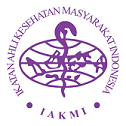Difference of effectiveness between educational video media and PowerPoint on sedentary lifestyle on students’ knowledge
DOI:
https://doi.org/10.12928/jcp.v6i1.9140Keywords:
Educational video, Knowledge, PowerPoint, Sedentary lifestyleAbstract
Living a sedentary lifestyle entails engaging in minimal physical activity and getting insufficient exercise. One of the common repercussions of sedentary habits among adolescents is obesity. With the onset of the COVID-19 pandemic, students often studied online, spending prolonged hours in front of computer screens. This shift to remote learning exacerbated the sedentary behavior already prevalent among adolescents, potentially worsening the risk of obesity and other associated health issues. To mitigate the detrimental effects of a sedentary lifestyle, this research aimed to enhance students' comprehension of relevant information on a sedentary lifestyle. A quasi-experimental pre-test and post-test design was used in this kind of study. Using the purposive sampling technique, the study sample consisted of 72 students from class X: 36 respondents from class X-1 were assigned to the instructional video media group, while 36 respondents from class X-2 were assigned to the PowerPoint group. A pre-test questionnaire was distributed to each group, followed by interventions and a post-test questionnaire. The Mann-Whitney test was used to analyze the data between groups, while the Wilcoxon test was used to analyze each group's data. After using PowerPoint and video media as an intervention, there was a significant difference in the respondents' knowledge level, with p values being the same (p value=0.000). The treatment group that used educational video media and the group that used PowerPoint media differed in effectiveness (p value=0.015). After receiving an intervention using a PowerPoint and video, the respondents' level of knowledge increased. Compared to PowerPoint presentations, educational videos are a more effective way to enhance understanding of inactive lifestyles. A remarkable opportunity exists to enhance adolescents' understanding of the importance of leading an active lifestyle by harnessing the potential of video media as an instrumental tool.
References
Mandriyarini R, Sulchan M, Nissa C. Sedentary lifestyle as a risk for obesity in stunted high school teenagers in Semarang City. J Nutr Coll. 2017;6:149–55.
Hayati S, Anggraeni DE, Irawan E, Ayu D, Silviani R, Adhirajasa U, et al. Overview of sedentary lifestyle in adolescents. J BSI Nursing. 2022;10:250–65.
Desmawati. Description of sedentary lifestyle and body weight of millennial adolescents in Tangerang, Banten. J Ilm Public Health. 2019;11:296–301.
Park JH, Moon JH, Kim HJ, Kong MH, Oh YH. Sedentary lifestyle: overview of updated evidence of potential health risks. Korean J Fam Med. 2020;365–73.
Fadila I. The relationship between sedentary behavior, overnutrition and work productivity in urban communities. 2016;59–76.
Tremblay MS, Colley RC, Saunders TJ, Healy GN, Owen N. Physiological and health implications of a sedentary lifestyle. 2010;740:725–40.
Hamalding H, Risna R, Susanti SR. The relationship between lifestyle and overweight and obesity in young women at SMA Negeri 11 Makassar. J Community Health Community. 2019;1:1–6.
Setyo I, Setyoadi, Novitasari T. Sedentary behavior and obesity in children aged 9-11 years in public elementary schools. Relationship between use of time, sedentary behavior and obesity in children aged 9-11 Years in SDN Beji 02, Tulungagung Regency. Nursing Science. 2015;3:155–67.
Kurdaningsih S. Physical activity and a sedentary lifestyle on adolescents with overweight/obesity status. J Int Community Medicine and Public Health. 2016;3:630–5.
Nuraini A, Murbawani EA. Relationship between abdominal fat thickness and serum High Sensitivity C-Reactive Protein (HS-CRP) levels in adolescents. J Nutr Coll. 2019;8:81.
Fajanah F, Meikawati W, P IA. Determinant factors of sedentary lifestyle in adolescents (study at SMP Negeri 29 Semarang). Muhammadiyah University of Semarang. 2018;1–19.
Huntington J. Registered Dietitians' Knowledge, Perceptions and Practices Regarding Physical Activity, Sedentary Behavior, and Counseling in Both. University of Guelph. 2019;
Mudasih I, Subroto WT. Comparison of student learning outcomes through video learning media with powerpoint. Intern ional J Educ ional Res Rev. 2019;3–9.
Nisak Z, Intan M, Pratiwi B, Veronica S. Effectiveness of counseling on adapting to new habits as an effort to prevent Covid-19. J Cakrawala Promkes. 2022;4:69–78.
Victory Y, Saputri S, Setyawan H, Wuryanto MA. Analysis of the relationship between sedentary lifestyle and the incidence of obesity in elementary school age grades 4-6 (study in salatiga city). J Public Health. 2019;7:236–45.
Adha A, Wulandari D, Himawan A. Differences in the effectiveness of providing counseling with video and simulation on the level of knowledge of pulmonary tb prevention (case study in ma husnul khatimah, rowosari village, tembalang district, semarang city). J Kedokt Diponegoro. 2016;5:565–79.
Sari P. Analysis of Edgar Dale's Cone of Experience and Diversity of Learning Styles to Choose the Right Media for Learning. Mudir: Jurnal Manajemen Pendidikan. 2019;1:43–57.
Rina Hifdzul Rahmi. Effectiveness of power point media extension and animation videos on knowledge of the impact of casual sex among class X and XI students in Yogyakarta. 2018;
Papilaya EA, Zuliari K, . J. Comparison of the influence of health promotion using audio media with audio-visual media on the dental and oral health behavior of elementary school students. e-GEAR (eG). 2016;4:1–5.
Yuniastuti RE, Wibowo M. The influence of video media on the level of knowledge of Hand Washing with Soap (CTPS) in preventing COVID-19 in Watubuat Tempel Sleman State Elementary School Students. J Cakrawala Promkes. 2022;4:13–25.
Izza F, Sesmiarni Z. Differences in student learning outcomes using animation video media and using powerpoint in jurisprudence subjects at MIS Baitul Hasanah Muara Bungo. J Educator and Counselling. 2022;4:561–72.
Aisah S. Health education using animation video media: scoping review. J Indonesian Nurse.2021;5:641–55.
Ananta AK, Yanu A, Fianto A, Prayitno S. Design of 3D based promotional media for Cotton Krampung Plaza (Kaza) Surabaya. 2014;3.
Salsabila ST, Mamat R, Suprihartona, Agung F, Safaatun GNE, Wardatul JE. Education with animated video media and vegetable and fruit points. J Ris Health. 2019;11:183–90.
Hanifah R, Oktavia NS, Nelwatri H, Health P, Padang K, Midwifery J, et al. Differences in the effectiveness of health education through animation video media and power point on the knowledge of adolescent girls in facing menarche. J Lighthouse Health. 2021;4:74–81.
Maysella YG, Imam S. Comparison of student learning outcomes through the use of interactive ppt-based poster media and animation video media in class IV social sciences content at SDN Bunulrejo 02 Malang. 2021;1:700–4.
Utami N, Khairuddin K, Mahrus M. Differences in student biology learning outcomes in using video media and powerpoint media through online learning at SMAN 3 Mataram in the 2020/2021 Academic Year. J Ilm Educator Profession. 2020;5:96–101.
Erniasih U, Pramono SE. Differences in learning outcomes using educational video media and documentary video media in history learning at SMA N 12 Semarang in the 2017/2018 Academic Year. Indonesian J Hist Educ. 2018;6:162–71.
Downloads
Published
Issue
Section
License
Copyright (c) 2024 Tsamarah Qaulan Sadida, Trixie Salawati, Rokhani Rokhani

This work is licensed under a Creative Commons Attribution-ShareAlike 4.0 International License.
Authors who publish with JCP: Jurnal Cakrawala Promkes agree to the following terms:
- Authors retain copyright and grant the journal the right of first publication with the work simultaneously licensed under a Creative Commons Attribution License (CC BY-SA 4.0) that allows others to share the work with an acknowledgement of the work's authorship and initial publication in this journal.
- Authors are able to enter into separate, additional contractual arrangements for the non-exclusive distribution of the journal's published version of the work (e.g., post it to an institutional repository or publish it in a book), with an acknowledgement of its initial publication in this journal.
- Authors are permitted and encouraged to post their work online (e.g., in institutional repositories or on their website) prior to and during the submission process, as it can lead to productive exchanges, as well as earlier and greater citation of published work.

This work is licensed under a Creative Commons Attribution-ShareAlike 4.0 International License












